Railroad Workers and Asbestos Exposure
Railroad workers suffer higher rates of mesothelioma because they were exposed to asbestos products used throughout locomotives. Exposure to asbestos in insulation, brakes, cement and gaskets caused asbestos-related illnesses in railroad workers.
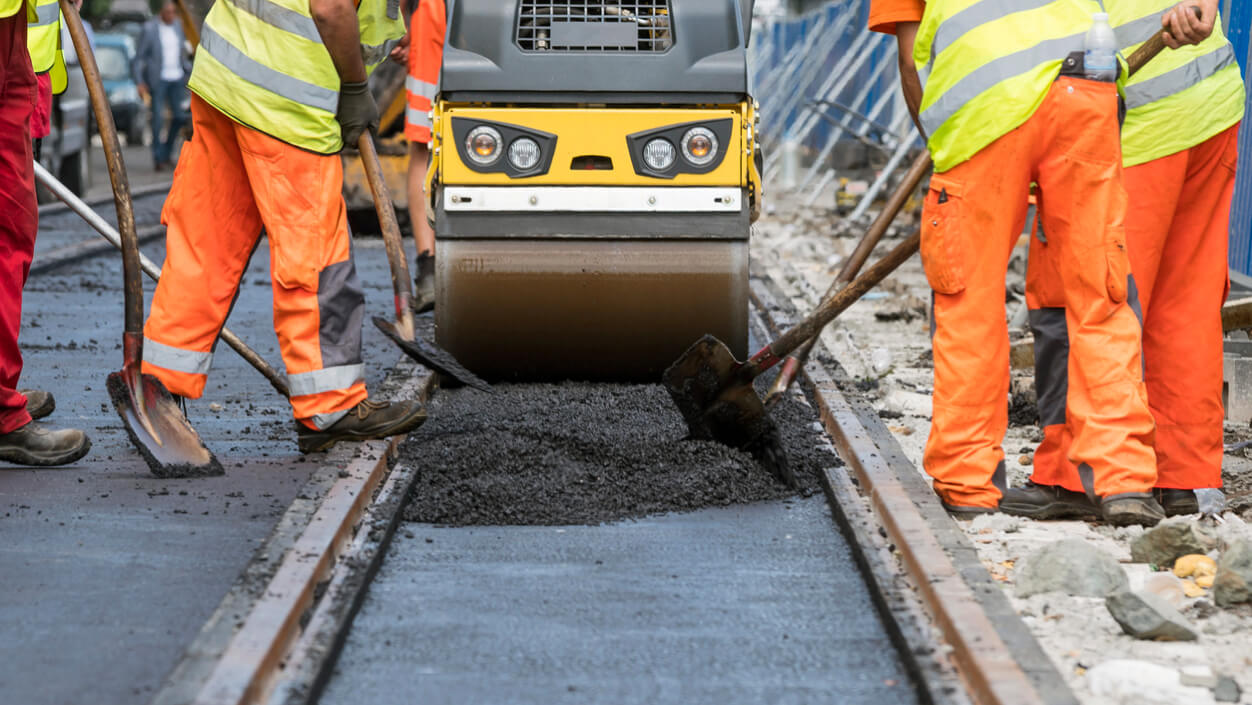
How Are Railroad Workers Exposed to Asbestos?
Asbestos was used in the manufacturing of train and locomotive components from the 1930s through the 1970s. Because asbestos was so widely used on trains, even railroad workers who did not handle the repairs of parts were likely to have been exposed to asbestos.
Any employee in or around roadhouses, railroad shops or repair shops were at risk of inhaling asbestos dust because it was routine for workers in these areas to cut, sand or smooth asbestos-containing materials, releasing the airborne asbestos fibers onto their clothes and into the air where they could be inhaled.
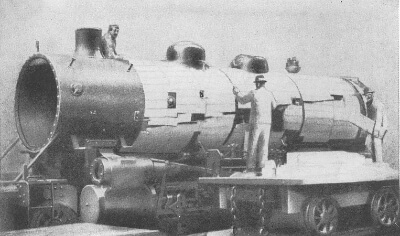
An abundance of asbestos was used in public driving cabins and carriages, including in floor tiles and wallboards, making conductors and yardmasters susceptible to asbestos exposure if the wallboards or floor tiles became torn through constant daily public use.
Asbestos was also used in brake pads, brake linings and clutches because of its strength and resistance to heat and friction. These parts eventually wear down and sometimes rip, exposing workers to asbestos fibers. Brake pads and linings were frequently removed and replaced, which required a lot of manipulating. This released a significant amount of asbestos dust into the air that was easily inhaled.
Railroad workers were exposed to asbestos when using sealing cement and gaskets, which were used to seal pipe joints and valves. Maintenance workers faced the highest risk of exposure maintaining and repairing the railroad tracks and locomotives, including plumbing, electrical and air-conditioning and heating systems that contained asbestos materials for their heat resistance.
Asbestos Products Associated with Railroads
Railroad workers were exposed to many asbestos-containing products, including:
- Boilers and Fireboxes
The boilers and fireboxes in steam locomotives contained asbestos parts and insulation, including asbestos lagging insulation and asbestos refractory cement, also known as furnace cement. Some fireboxes were made from asbestos-containing firebrick.
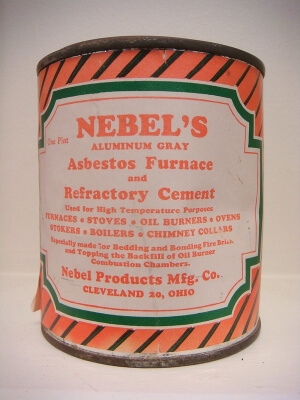
- Brakes and Clutches
Asbestos was used in locomotive brake pads, brake linings and clutches for its strength and resistance to heat.
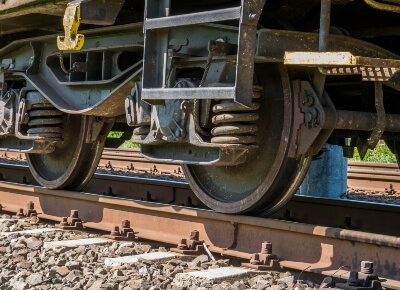
- Ceiling and Floor Tiles
The ceiling and flooring tiles in train passenger cars commonly contained asbestos to provide a visually appealing form of fireproofing.
- Cement Ties
Asbestos was used in cement ties that secure rail lines.
- Disposable Ash Trays and Coasters
The Green Bay and Western Railroad gave train passengers asbestos-containing disposable ash trays that doubled as beverage coasters.
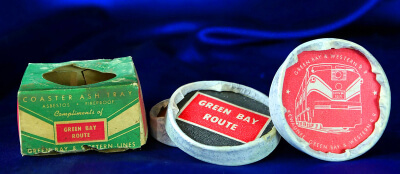
- Gaskets
Asbestos gaskets, including sheet and rope gaskets, were used throughout locomotives.
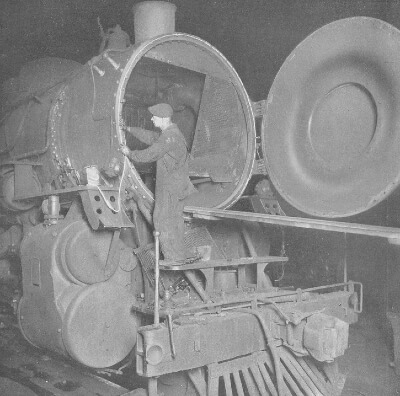
- Insulation
Asbestos was used to insulate materials on steam locomotives and diesel locomotives, such as boilers, the outside of the engine, under the metal body of the train, in boxcars, ceilings of cabooses, pipe coverings, electrical panels and the driving cabins and carriages. It was also used in insulation in roadhouses and railroad shops. Asbestos block insulation or asbestos panels were often used as insulation on steam locomotives. Asbestos packing material was utilized as a form of insulation throughout locomotive equipment.
- Plaster
Asbestos in plaster served as a fireproofing sealing material on trains.
- Paint
Paint that contained asbestos was used throughout trains because of its resistance to fire.
- Rope
Asbestos rope was commonly wrapped around pipes as a form of insulation.
- Sealing Cement
Asbestos cement was also used as a sealant and adhesive when making repairs to locomotives.
- Wallboards
Asbestos wallboards were used in train cars as a method of fireproofing.
Manufacturers of Products Railroad Workers Use
The following manufacturers using asbestos in products have been held liable for asbestos-related diseases that developed in railroad workers.
- Abex Corporation: Abex made brake linings, gaskets and packing used on trains.
- Johns Manville: JM manufactured many different types of asbestos products, including asbestos rope gasketing that was installed on trains to create seals between locomotive parts. The company also made asbestos cement products, heat panels and adhesives that were used by railroad workers.
- Keasbey & Mattison: K&M made a variety of asbestos construction materials used to build locomotives, including block insulation, pipe insulation, asbestos furnace cement, gaskets and packing material.
- General Motors: A division of GM known as Electro-Motive Diesel made some asbestos-containing locomotive parts and engines that exposed railroad workers. GM also made asbestos brake shoes for locomotives that exposed railway brakemen.
- Griscom-Russell Company: Now known as Viad Corporation, this company made asbestos-containing engine valves for locomotives.
- H.K. Porter: The company began as a small machine shop and grew to become the largest manufacturer of industrial locomotives in the U.S. They made asbestos-containing pipes, steam valves, brakes, brake pads and gaskets.
- Railroad Friction Products Corp.: This company made asbestos-containing brake shoes and disc brake linings for locomotives.
- Raybestos-Manhattan: Raybestos made brake linings and gaskets that were used on trains.
In addition to these asbestos product manufacturers, the following railroad companies have been involved in asbestos litigation:
- Amtrak
- Atchison, Topeka and Santa Fe Railway
- Birmingham Southern Railroad Company
- BNSF Railway Co.
- Carolina & Western Railway Co. Inc.
- Chesapeake and Ohio Railway Company
- Conrail
- CSX Transportation
- Elgin, Joliet & Eastern Railroad Co.
- Iowa Interstate Railroad Ltd.
- Kansas City Southern Railway Company
- Metro-North Commuter Railroad Co.
- Seminole Gulf Railway
- Transtar Inc.

Learn about your diagnosis, top doctors and how to pay for treatment.
Get Your Free GuideRailroad Workers and Mesothelioma
Several studies have documented a connection between asbestos exposure among railroad workers and increased rates of asbestos-related diseases, including mesothelioma. According to a 2022 report by the European Commission, over 70,000 workers died in 2019 from past exposure to asbestos.
- A 2015 British Medical Journal study analyzed asbestos-related deaths in Belgian workers from 2001 to 2009. According to the data, railroad workers are over three times more likely to die of mesothelioma than the general population.
- An Italian case report from 2014 described a case of mesothelioma in a railroad worker who maintained railway electrification systems. Analysis of the worker’s job revealed he was exposed to crocidolite asbestos insulation applied to the underbody of train cars.
- The Department of Medicine at Brigham and Women’s Hospital in Massachusetts conducted a study in 1987 which found that before the transition from steam-powered locomotives to diesel-powered locomotives in the 1950s, railroad workers were at risk for significant asbestos exposure.
- A 1943 report by Dr. Wilhelm C. Hueper showed operating railroad workers were more than three times at risk of developing lung cancer compared to nonoperating workers. Operating railroad worker occupations included engineers, firemen, brakemen, conductors, switchmen and roundhouse personnel.
Mesothelioma is a rare cancer almost exclusively caused by asbestos exposure. When asbestos fibers are inhaled, many are expelled, but some become lodged in organ tissues and remain there for a lifetime. The accumulation of fibers causes inflammation and scarring that may lead to the development of mesothelioma cancer and other asbestos-related illnesses.
There is no cure for mesothelioma, but doctors are working toward a cure through clinical trial research. If you’ve been diagnosed with this type of asbestos cancer, it is important to find a mesothelioma specialist to handle your treatment.
Asbestos exposure is also known to cause lung cancer, ovarian cancer, laryngeal cancer and asbestosis. The latter is a pulmonary disease marked by progressive scarring of the lungs.

Get help finding a top attorney who can get you the compensation you deserve.
Get Help NowLegal Options for Railroad Workers Exposed to Asbestos
Railroad workers diagnosed with mesothelioma and other asbestos-related diseases may be eligible to file a personal injury claim or asbestos trust fund claim. Those who lost a loved one to mesothelioma may qualify to file a wrongful death claim. Claimants may qualify to file lawsuits against railroad companies or manufacturers of asbestos products that caused their illness.
Injured railway workers may sue their employers for injuries under the Federal Employers Liability Act. A FELA lawsuit is a civil action lawsuit. The injured railroad worker must show that the employer’s negligence contributed to the injury, and the case may be brought in federal or state court. To be covered under FELA, the railroad company and specific railroad in question must operate in multiple states. If the railroad only operates in one state, the plaintiff may sue individual manufacturers of asbestos-containing products, but not their employer.
- In 2019, a Virginia jury awarded $5 million to the surviving family of railroad worker Stephen F. Fowlkes, who died of asbestosis following asbestos exposure throughout his career repairing locomotive cars for Norfolk and Western Railway Co. Because Fowlkes was found 80% responsible for his injuries because he was a smoker, his employer was only required to pay $1 million of the total verdict.
- The wife of railroad worker Ray Williams won a $7.4 million verdict against CSX Transportation in 2006. Williams filed a Federal Employers Liability Act claim against CSX Transportation, his employer, after he was diagnosed with mesothelioma. Williams died while the case was ongoing, but his wife Shirley substituted for him. The lower court jury found that CSX was aware of asbestos-containing materials the company used, and did not notify its employees of the health hazards that presented, which was ultimately the cause of Williams’ death.
- In a 2003 case, six former Norfolk and Western Railway Co. employees suffering from asbestosis sued the company and each former employee was awarded between $770,640 and $1.2 million in damages. After reduction for three former employees’ comparative negligence from smoking and for settlements with non-FELA entities, the final judgments amounted to approximately $4.9 million.
- The wife of railroad worker Frederick F. Petersen won a $235,000 verdict against Chesapeake and Ohio Railway Company in 1984 after Petersen died of occupational asbestos exposure. Petersen was routinely exposed to asbestos when he removed asbestos insulation from pipes and equipment.
It’s important for railroad workers diagnosed with asbestos-related diseases to find an experienced mesothelioma attorney to handle their claim. FELA lawsuits should be handled by a mesothelioma firm with prior experience handling these types of claims.
Recommended Reading


